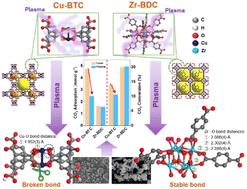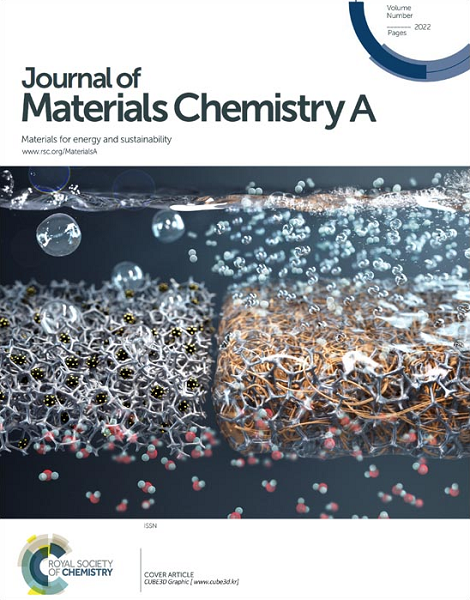Structural responses of metal–organic frameworks to non-thermal plasma treatment and their effects on CO2 adsorption and conversion performances
IF 10.7
2区 材料科学
Q1 CHEMISTRY, PHYSICAL
引用次数: 0
Abstract
Non-thermal plasma (NTP)-assisted catalysis shows exceptional carbon dioxide (CO2) conversion performance at atmospheric pressure and room temperature. However, the structural stability of MOFs under plasma treatment constrains their application in CO2 adsorption and conversion. Moreover, the structural responses of MOFs to plasma treatment and the effects on their CO2 adsorption and conversion performance remain poorly understood. Herein, changes in the crystal structure and physicochemical properties of several MOFs (i.e., Cu-BTC, Zr-BPDC, Zn-MeIM and Zr-BDC) under NTP treatment were investigated by SEM, XRD, FTIR and BET analyses, and the disparities in the CO2 adsorption and conversion performances of these MOFs with different structures were analyzed. Results indicated that Cu-BTC formed using Cu2+ as the chelating ligand and Zr-BDC formed using the [Zr6O4(OH)4] metal cluster and a ligand exhibited varied structural stability under NTP treatment. Ar plasma mainly attacked and broke the Cu–O1 bond of Cu-BTC, causing an increase in crystal defects and a significant reduction in the micropore volume, accompanied by a 46.0% decrease in CO2 adsorption capacity. The destruction of the Cu-BTC structure by the plasma weakened the discharge intensity of plasma and inhibited the conversion of CO2. In contrast, Zr-BDC showed excellent coordination bonds and pore structural stability against NTP treatment, which promoted the synergistic effect of plasma and the catalyst in the CO2 hydrogenation reaction. This study enhances our understanding of the structure and functions of MOFs against NTP treatment, which is significant for expanding the application of MOFs using NTP-assisted catalysis.

求助全文
约1分钟内获得全文
求助全文
来源期刊

Journal of Materials Chemistry A
CHEMISTRY, PHYSICAL-ENERGY & FUELS
CiteScore
19.50
自引率
5.00%
发文量
1892
审稿时长
1.5 months
期刊介绍:
The Journal of Materials Chemistry A, B & C covers a wide range of high-quality studies in the field of materials chemistry, with each section focusing on specific applications of the materials studied. Journal of Materials Chemistry A emphasizes applications in energy and sustainability, including topics such as artificial photosynthesis, batteries, and fuel cells. Journal of Materials Chemistry B focuses on applications in biology and medicine, while Journal of Materials Chemistry C covers applications in optical, magnetic, and electronic devices. Example topic areas within the scope of Journal of Materials Chemistry A include catalysis, green/sustainable materials, sensors, and water treatment, among others.
 求助内容:
求助内容: 应助结果提醒方式:
应助结果提醒方式:


